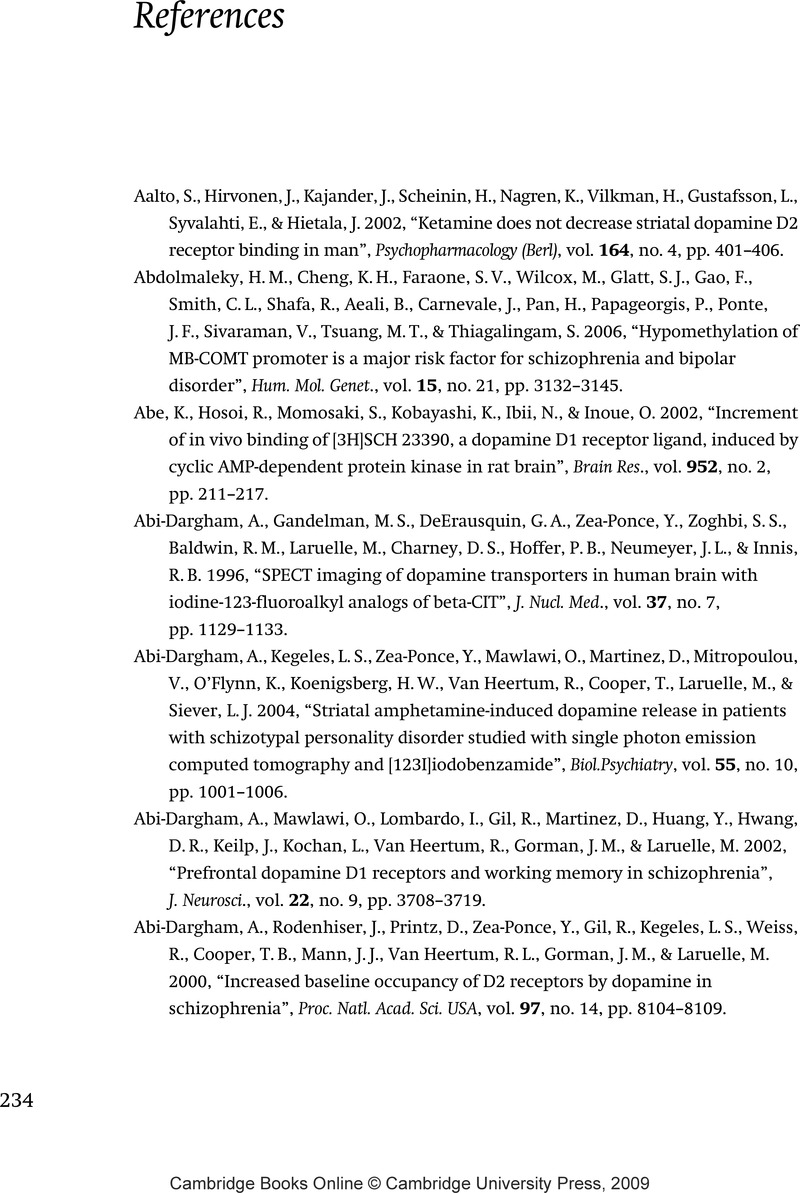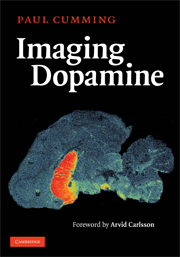Book contents
- Frontmatter
- Contents
- Foreword
- Acknowledgments
- Introduction
- 1 The life history of dopamine
- 2 Enzymology of tyrosine hydroxylase
- 3 The assay of tyrosine hydroxylase
- 4 Enzymology of aromatic amino acid decarboxylase
- 5 PET studies of DOPA utilization
- 6 Conjugation and sulfonation of dopamine and its metabolites
- 7 Dopamine synthesis and metabolism rates
- 8 MAO activity in the brain
- 9 Vesicular storage of dopamine
- 10 Dopamine release: from vesicles to behavior
- 11 The plasma membrane dopamine transporter
- 12 Dopamine receptors
- 13 Imaging dopamine D1 receptors
- 14 Imaging dopamine D2 receptors
- 15 Factors influencing D2 binding in living brain
- 16 The absolute abundance of dopamine receptors in the brain
- 17 Conclusions and perspectives
- References
- Index
- Plate section
- References
- Frontmatter
- Contents
- Foreword
- Acknowledgments
- Introduction
- 1 The life history of dopamine
- 2 Enzymology of tyrosine hydroxylase
- 3 The assay of tyrosine hydroxylase
- 4 Enzymology of aromatic amino acid decarboxylase
- 5 PET studies of DOPA utilization
- 6 Conjugation and sulfonation of dopamine and its metabolites
- 7 Dopamine synthesis and metabolism rates
- 8 MAO activity in the brain
- 9 Vesicular storage of dopamine
- 10 Dopamine release: from vesicles to behavior
- 11 The plasma membrane dopamine transporter
- 12 Dopamine receptors
- 13 Imaging dopamine D1 receptors
- 14 Imaging dopamine D2 receptors
- 15 Factors influencing D2 binding in living brain
- 16 The absolute abundance of dopamine receptors in the brain
- 17 Conclusions and perspectives
- References
- Index
- Plate section
- References
Summary

Information
- Type
- Chapter
- Information
- Imaging Dopamine , pp. 234 - 330Publisher: Cambridge University PressPrint publication year: 2009
